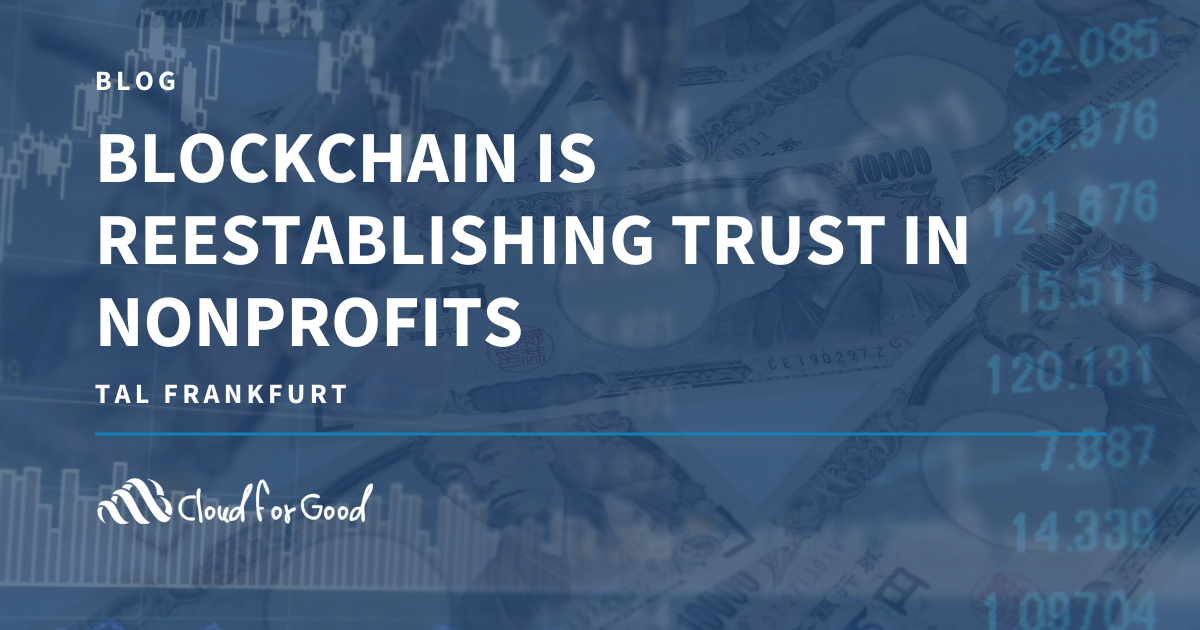NOTE: This blog was originally posted on Forbes. Read it here.
Bitcoin and hundreds of other blockchain-based cryptocurrencies are on the rise, allowing a new form of digital money that is not tied to a specific government. The technology that makes cryptocurrency possible is called blockchain, a decentralized general ledger controlled by all its users rather than a central bank. While money based on large amounts of code may sound really complicated to understand, there are key aspects of blockchain that make it a very attractive technology for nonprofit organizations.
Geographically Agnostic
The distributed aspect of blockchain enables global organizations to be more efficient. For example, the UN World Food Program (WFP) was able to use blockchain to make cash-based transfers to organizations who are supporting Syrian refugees. According to Robert Opp, WFP’s director of innovation and change management, “blockchain technology allows us to step up the fight against hunger.” Through this program, the UN can cut costs, control financial risks such as fraud and respond more quickly to emergencies.
Transparency
Traditional currencies are not easily tracked when they are exchanged. However, digital currencies are unique and are traceable throughout the ledger. While there is a vibrant conversation within the nonprofit sector about the meaning of overhead and whether organizations should be measured by the percentage they spend on fundraising, one thing we know for sure is that donors prefer to fund projects directly. Donors want to see where the money is going and how it is being used at any given time.
One new platform already taking advantage of blockchain is GiveTrack. GiveTrack takes donations for projects in Bitcoin and connects the financial information with the results of a project that are actively communicated by the nonprofit. The side effect of this transparency could be an increase in trust that donors will have in organizations (which could increase giving). At the same time, it could create a lot of challenges for organizations when communicating with their donors about how funds are being spent.
The ledgers are not only used for financial transactions. Blockchain technology could also be used to track and protect valuable assets such as documents, art or jewelry throughout their lifetime journey. Companies like Brilliant Earth leverage blockchain technology to better document the source of gemstones, ensuring they address the social and environmental issues related to mining and manufacturing precious stones.
Anonymity
With blockchain technology, you can tell which wallet the donation is coming from but you don’t know who owns the wallet. There is some risk in this anonymity for organizations accepting these payments. For example, it is possible to receive a donation from illegal or questionable sources. However, it could also allow donors and organizations to fund projects whose outcomes and objectives may otherwise be forbidden. For example, the use of blockchain technology to mask the identity of the donor could be incredibly useful to support causes that combat the persecution of gay men in places like Uganda or Russia.
While the concept of blockchain technology and accepting cryptocurrency donations may seem overwhelming, an increased familiarity with these transactions could bring substantial benefits to the nonprofit sector. It allows transparency of financial contribution, ensures authenticity in goods we buy or sell globally, reduces risk and fraud, is fast and, most importantly, it could reestablish or reinforce the trust donors have in charities. Your first step is simple: Open a crypto-wallet — an address where crypto-payments can be sent — to receive donations. You can hold the wallet on your own computer or use one of many cloud-based wallet providers. After you set up your wallet you can direct donors to that wallet and sell either Bitcoin or another cryptocurrency or keep it as an investment.
Finally, I’d like to leave you with one last futuristic thought. The combination of the Internet of Things and blockchain technology has the potential to do much more than enabling digital currencies or supporting existing donors. Using the blockchain framework, internet-enabled objects that we interact with on a daily basis, such as a refrigerator, washing machine and lights, might be able to generate their own digital currency. This means that not only could these objects earn money, they might also save it or give it away. Will we see a new generation of robot philanthropists in the future?
You may also enjoy:





